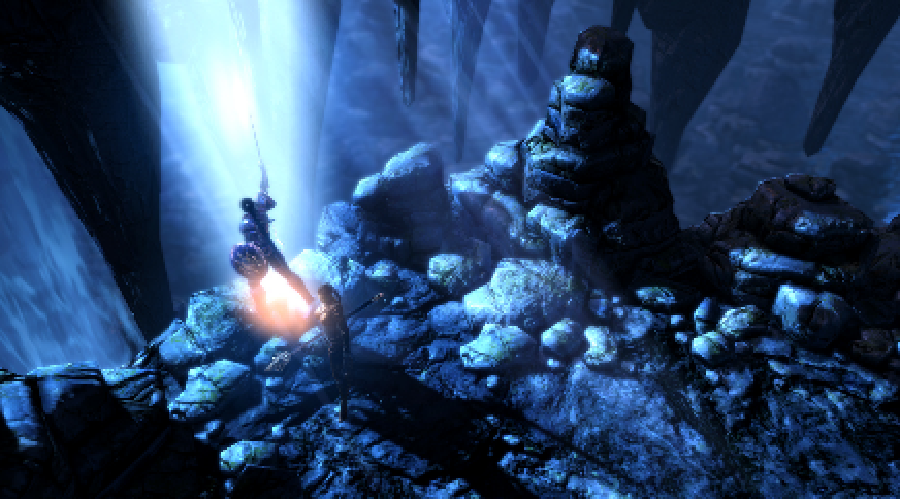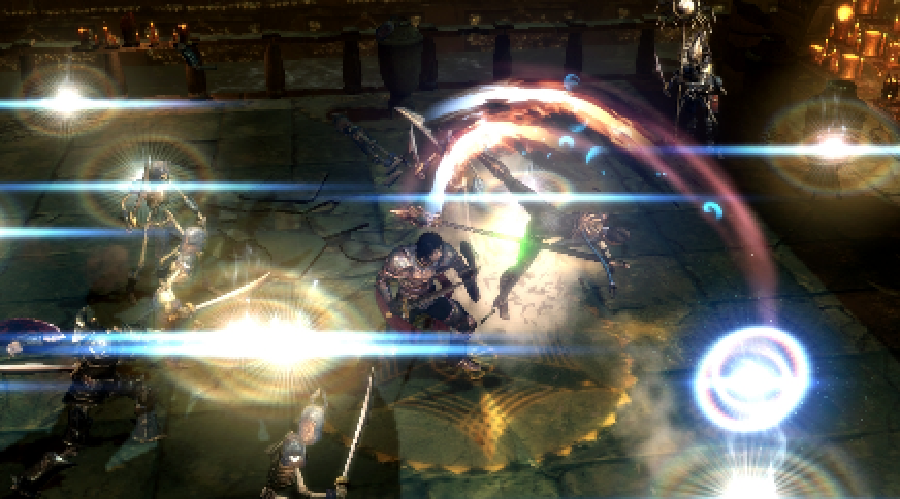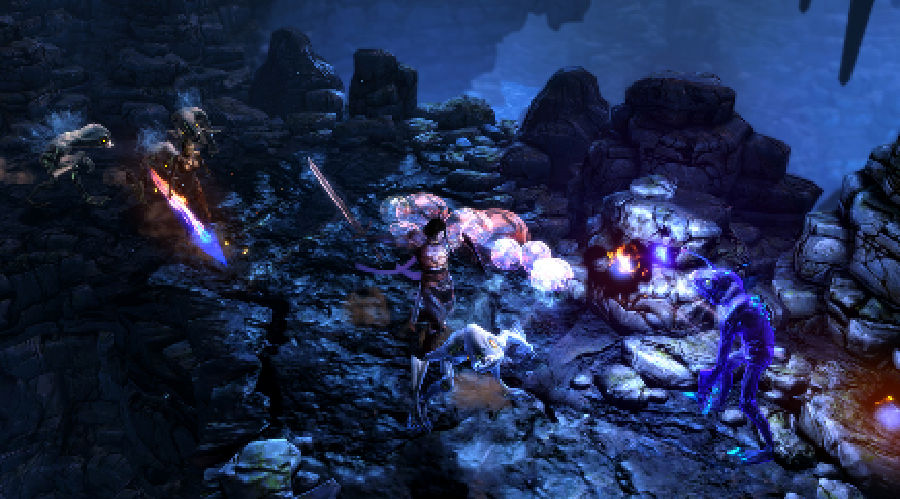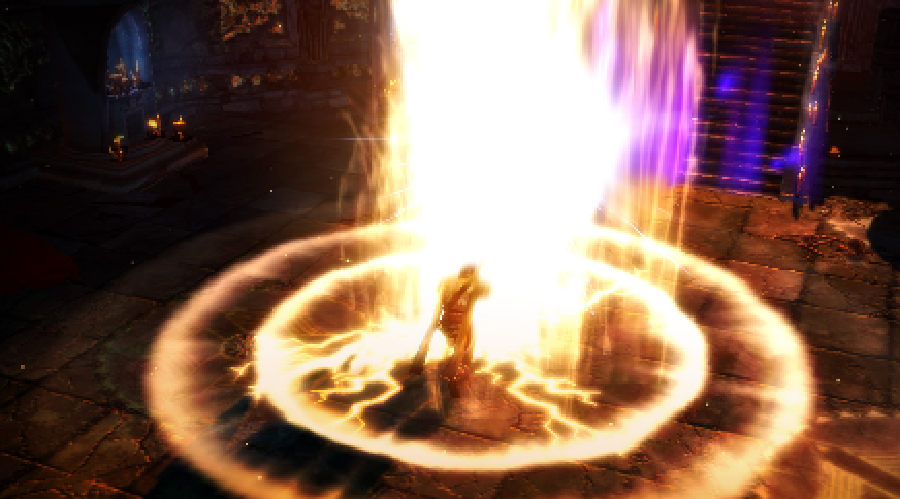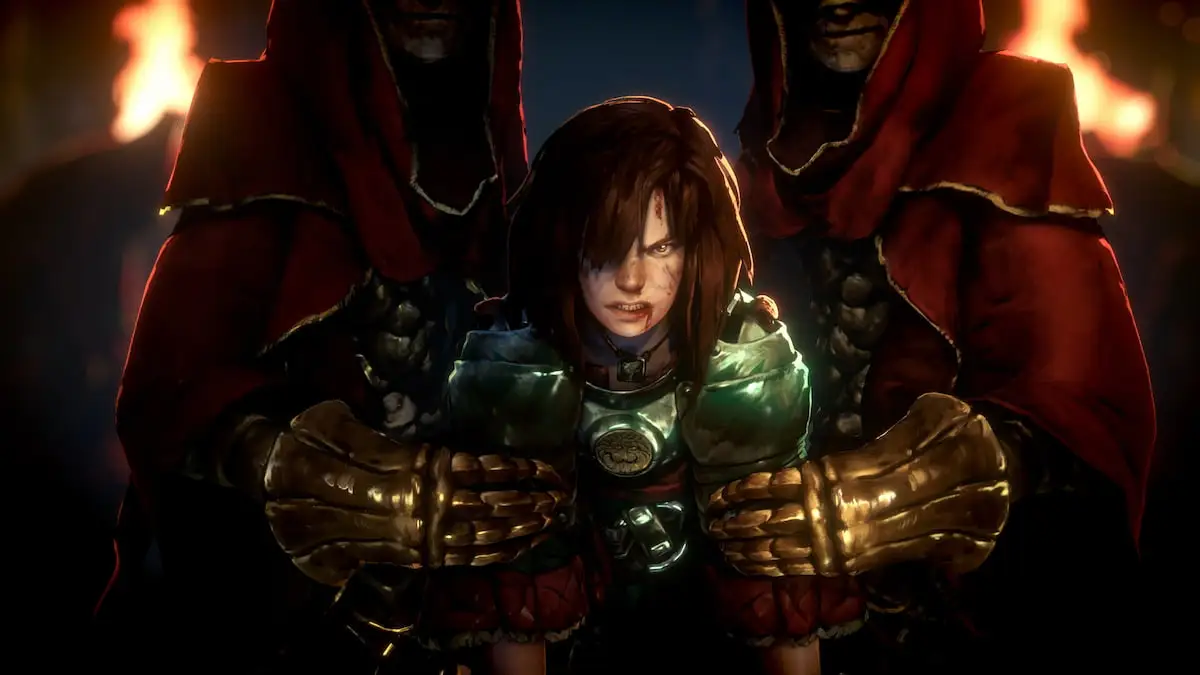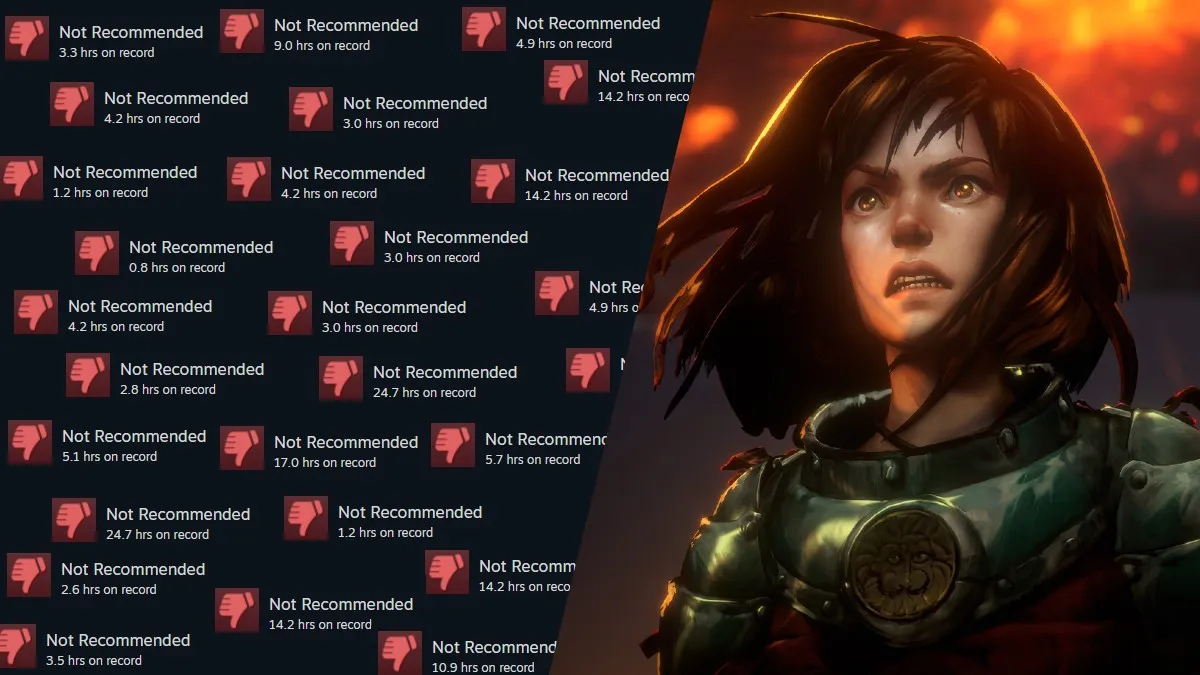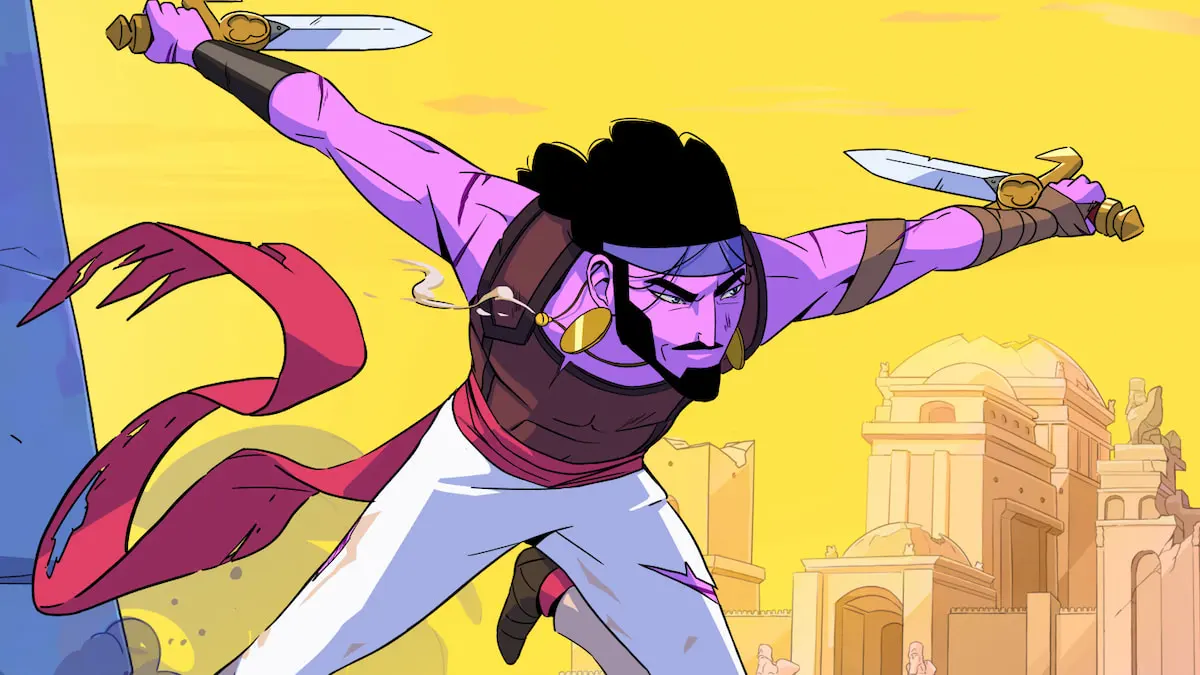Dungeon Siege III is a slightly different beast to its predecessors, though there are a huge amount of similarities between this edition and those that came before it. Obsidian have brought new life to the game by injecting much more of an action-orientated element into its magic-filled vein.
Whilst DS3 may not be the developer’s own IP, this is the first title we’ve seen Obsidian release with their very own built-from-scratch engine Onyx. The engine has been purpose built for RPGs over the last few years and we can no doubt expect to see more from it in the future due to its more than successful results in DS3.
We’re playing a version that’s not looking too far from completion and wandering through a variety of quite varied locations, we see a massively detailed world, full of impressive particle effects and teeny environmental intricacies. Much effort has been put into creating something that looks and feels immersive. Diffraction from the sun’s rays, gently falling leaves, flying birds and hovering butterflies amongst a whole host of other little details all help to create a world that feels alive and thriving.
Gameplay has been carefully molded by the devs into being Fun and if you’re ever lost then there’s the option of simply asking for a little guidance from a breadcrumb trail. Combat sits somewhere in the middle of many of the simpler action RPGs and those that require a manual the size of your house.
There’s a lot of dodging and rolling going on (at least while I’m playing), and it all proves to be incredibly useful in combat whilst dash attacks and specific spells are provided in order to deal with unwanted larger gatherings. The ease of movement and quick access to special attacks allows room for those who enjoy a good third-person hack-slash romper to join in without feeling too baffled and out in the cold. You’ll often find yourself battling large groups of enemies and thus crowd management has been looked at with some great importance.
Obsidian have decided to opt for characters that come with their own specific traits rather than going with classes in DS3 This prevents immediate customization but there’s still scope for change as you play through. Again, it’s immersion here the devs are focusing on; the mandatory characters have been brought in as it’s easier to create well-defined backgrounds and stories for them. This is a step away from the anonymity and lack of depth sometimes felt with RPGs’ protagonists and does well to add some weight to the story.
Obsidian have for a long time been prolific and thorough with their storytelling; they have a penchant for detail that’s fast becoming their trademark. This particular game sees no change to the trait; in fact it’s a shining example of it. Dialogue has been dealt with in what will most likely soon be a standard method known commonly as “The Mass Effect Wheel”. It is something of a regular feature currently due to it’s effectiveness though, not just lazy imitation. The MEW is a quick way to read through large chunks of dialogue, helping decision-making an easy process in trees that may have previously been difficult without such a logical system.
While choices aren’t massively integral to DS3 as such (at least compared to some RPGs), they’re certainly worthy of note. Most conversations will feature moments in which you’ll choose what your character says. And with a plot that’s focused entirely around creating a rep for a group, it feels like these decisions could hold some weight.
Decisions don’t stop at conversation though, as certain moments will present chances to choose your character’s actions. Word on the street is that these moments will have relatively large impacts on where the plot goes and how it all ends. There are moments in which your party can choose either to slay a boss or just leave it for fear of negative ramifications. These key moments are often influenced by the opinions of companions, who may or may not have good ideas. It’s often possible to find you’ve caused a massive kafuffle with something you’ve done much earlier (certainly a realistic feature if your life is anything like mine).
Whilst milling over the pros and cons of intellectual conundrums mightn’t be a main focus of the game, loot certainly is. Looty looty, loot loot loot. Loot. There’s a lot (loot?) of it, if I hadn’t made that clear, and you’ll be wanting it all. Apparently Obsidian haven’t been randomizing the specs of items or their locations too much, and have revealed that there are some very special bits of booty carefully placed in chests at specific locations.
Equipment is assigned easily, the idea being that it should be simple to gamers who haven’t played many RPGs. This simplicity helps DS3 flow at a speedy pace, meaning newcomers won’t be stunted by hours of staring at menus ridden with unfathomable attributes and stats.
That said, there are still many levels of progression for moves and weapons, it’s just they’re all easy and logical to grasp. Upon reaching specific levels, abilities are gained, which can later be worked on and improved with proficiency points. To use said moves, a certain amount of focus is required, a bar you’ll need to keep a close eye on that’ll build up with the use of standard attacks.
On top of abilities are talents, which again can be leveled up with talent points, these have permanent effects on your character and are obviously best used to compliment your chosen style.
The characters’ fighting styles boast a clearly-defined duality, each with their two individual stances. This can be something as simple as one or two-handed, something we see with warrior Lucas. On the opposite end of the spectrum, archon Anjali, in her offensive stance, can turn into a ferocious-looking-super-fire-mage-come-warrior who’ll float in the air causing ruckus with massive flamey death spells.
There’s an element of strategy to choosing where to place your characters, with Lucas being best for taking the brunt of the enemy’s attacks up close whilst more ranged characters such as Anjali are best kept further away.
It’s quickly clear that keeping yourself sweet with the characters in your team is n advantage, as gaining the trust of a character will eventually lead to achieving a “deed”. Deeds work much like PlayStation Trophies or Xbox 360 Achievements but with the added bonus of boosting a stat of some sort. They’re achievable via various means, including making certain decisions, completing a certain number of side quests or sustaining an amount of damage.
It’s looking to be pretty massive in size; there are towns packed full of side-quests with tons of beasties and big end-of-dungeon bosses to defeat as well as a huge main campaign. Keep an eye out for this one as it’s looking like a lot of fun.


